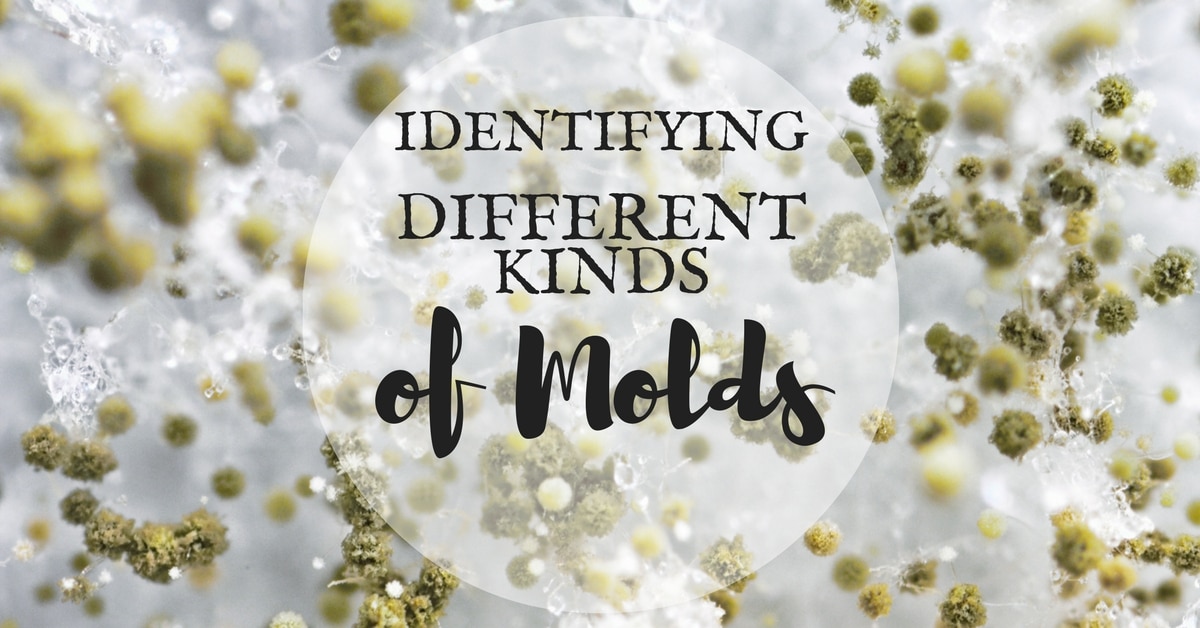
Just like a bag of jelly beans, or a box of crayons, mold can come in all different kinds of colors. Although not as fun as jellybeans or crayons, learning how to identify the different kinds of mold is vital to being a good homeowner. Here is some helpful information about mold that every homeowner should know.
How to Identify Different Types of Mold
- Black Mold: This mold, also known as Stachybotrys Atra, is tricky because it can come in different shades of black and in different forms. This kind of mold lives off of moisture to survive and can be very dangerous to people and pets living in the house. It is important to make a black mold removal plan as soon as possible. It will often appear as slimy and with a dark greenish-black (sometimes gray) coloration to it. Black mold also has a distinct smell and can contaminate the air you breathe.
- Bathroom Mold: With the amount of water and hot moisture in the bathroom, mold often ends up living in the bathroom. There are a few different types of pink mold, including fusarium and aureobasidium. Aureobasidium is a common bathroom mold, frequently found growing around damp window frames and on caulking. Fusarium is most often found growing on plants, including houseplants, but can also be found on wallpaper, carpet, and similar materials. Risks from the mold include respiratory problems, inflammation, and infections of the lungs, bleeding in the lungs, allergic reactions, hives and rashes.
- Basement Mold: The basement is mold’s favorite place to hang out, so checking your basement for mold frequently is important. If the mold is closer to black, it is either the Stachybotrys or Cladosporium molds. If it’s closer to light gray, it is either Aspergillus or Fusarium molds. To figure out which type of dark mold and you have, looking at the texture is the best way to do so. If the basement mold looks slimy, it is probably Stachybotrys. Otherwise, it’s likely Cladosporium.
Other Types of Mold via Mold-Advisor.com:
- Alternaria is often found outdoors, but it also grows in damp places indoors, like in showers or under sinks with leaky pipes. It can also be found in buildings that have been flooded or suffered other water damage. It spreads easily from one area of the home to another. Exposure to Alternaria can cause allergic reactions and asthma attacks.
- Trichoderma is often found growing on a damp carpet, wallpaper, and other wet surfaces. It produces mycotoxins similar to those produced by Stachybotrys Chatarum, and it can cause similar health problems. Many people are also allergic to trichoderma.
- Ulocladium requires a lot of water, so it frequently grows in areas with extensive water damage, including homes that have been flooded. It’s often found growing on wet walls. Many people are allergic to Ulocladium.
- Aureobasidium is a mold often found outdoors, but it can also be found in homes growing on wooden surfaces, wallpaper, and painted surfaces. It’s also often found on damp window frames and caulking. It is pink and black in color. Many people are allergic to Aureobasidium.
The best way to control mold growth is to control moisture. If you are struggling with the prevention or need to remove the toxic mold in your home or commercial space, contact the experts at Octagon. Just call our 24/7 emergency hotline at 207-893-0002 if have any questions or concerns about mold in your home.
